- Eight Sleep vs Sleep Number Compared - November 17, 2025
- My 8 Picks for the Best Temperature-Regulating Blankets - November 16, 2025
- Best Sleep Gadgets for Hot Sleepers - November 14, 2025
You know that feeling when you wake up groggy, your nose is stuffy, your eyes are itchy, and you blame it on pollen or dust in the air? If you’re anything like me you’ve also been yelling “it’s just allergies!” for the past 10 years while trying to convince yourself that even though it’s November and nothing is blooming the season must be to blame.
But one potential new culprit?
Your bed.
See, a lot of that irritation could be actually coming from your bed. Your sheets – the very things that are supposed to cocoon you in comfort – can turn into a cozy AirBnB for dust mites, allergens, and bacteria. And once they’re in there? Good luck sleeping soundly.
That’s where hypoallergenic sheets come in.
Not just another marketing buzzword, hypoallergenic bedding can be a game-changer for people with allergies, sensitive skin, or anyone who just wants a cleaner, healthier sleep environment. And since we spend about a third of our lives in bed (some of us more, if Netflix auto-play is involved), your sheets deserve more attention than “whatever was on sale at Costco.”
So let’s break it down: what makes sheets hypoallergenic, which fabrics pull their weight, how silver-infused sheets compare across brands, and which options are worth your money – from eucalyptus to organic cotton.
What Does Hypoallergenic Really Mean?
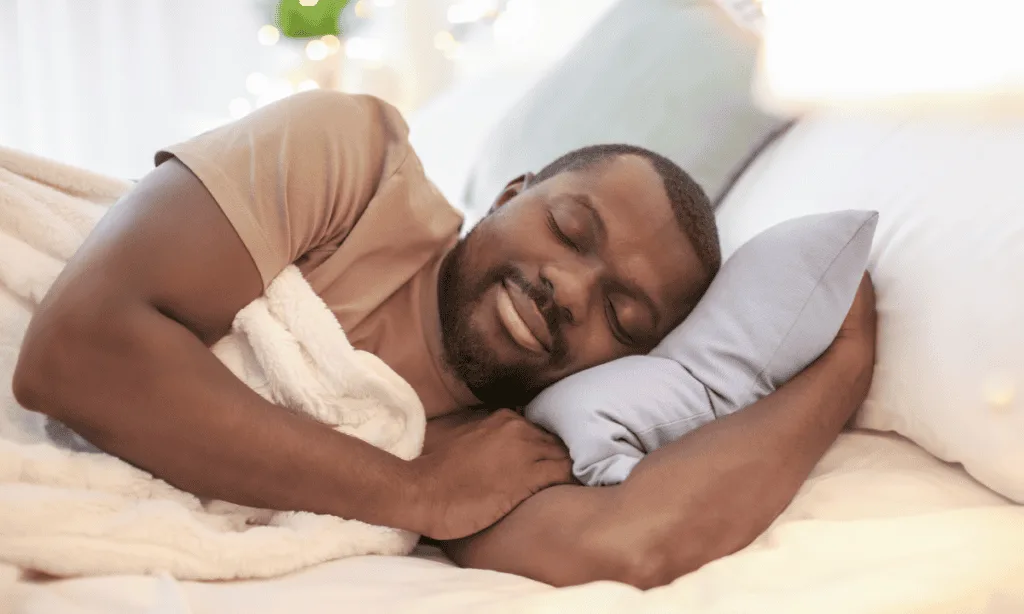
Here’s the thing: hypoallergenic isn’t a regulated term. Which means brands can slap it on pretty freely. Important to remember, because no fabric is some magical, self-cleaning, allergen-proof unicorn. If a company is promising sheets that repel literally everything (while folding themselves after laundry day)? Yeah…not the droid you’re looking for.
What hypoallergenic sheets actually do is help reduce the common culprits – dust mites, pet dander, mold and mildew, and bacteria buildup. In other words, they make your bed a whole lot less friendly to the things that make you sneeze, sniffle, or wake up feeling gross.
And when it comes to the sheets your parents got when you moved into your first apartment 15 years ago? Those may have become an all-you-can-eat buffet for dust mites, and if you’re still using those sheets then you’re going to feel it. Congestion. Itchy skin. That mysterious 3 am sneeze attack. Sleep already gets interrupted by enough – kids, pets, neighbors who think midnight is the right time to test their new subwoofer – but your sheets shouldn’t be on the list, too.
Hypoallergenic bedding isn’t promised perfection. But it is promising fewer allergens hanging out in your personal sleep zone. And that can be the difference between dragging yourself through the day or waking up and actually functioning like a human.
Fabrics that Pull their Weight
Not all fabrics are created equal, and some are basically begging dust mites to move in. Let’s break it down:
Cotton (classic):
Breathable, durable, and the most familiar option out there. Works best with a tighter weave like percale, which helps block allergens.
- Brands to check: Sleep & Beyond offers hypoallergenic cotton sheets in a sateen weave that are made with organic cotton free of pesticides and carcinogenic chemicals.
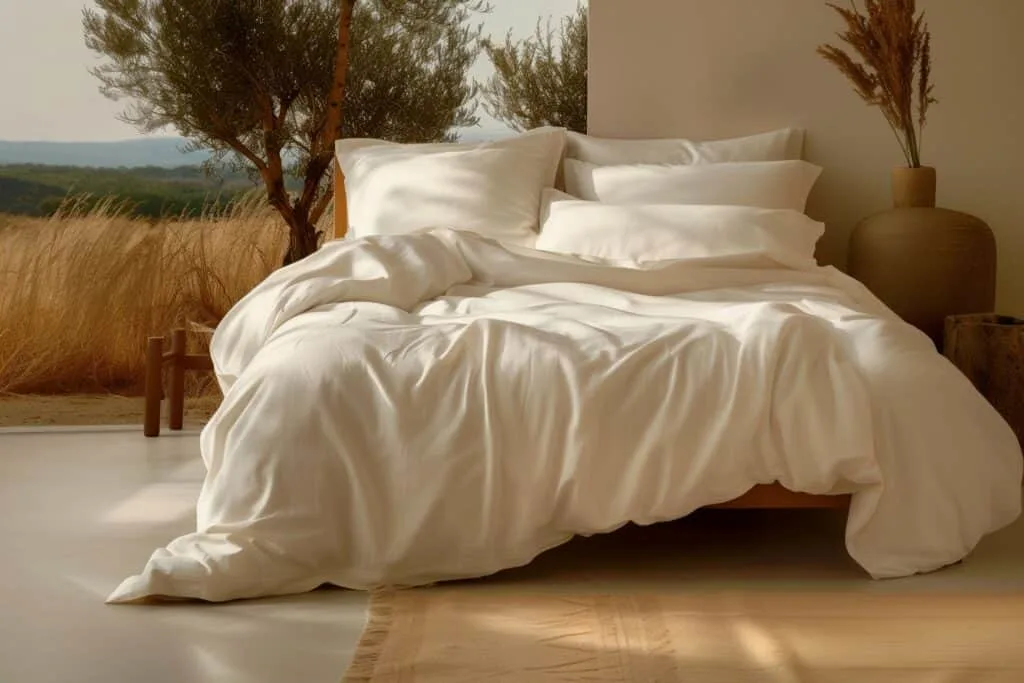
Silver-Infused Cotton:
The overachiever of the group, take what you love about the feel of cotton on your skin and infuse it with silver. Not so you can feel like Scrooge McDuck sleeping in riches, but because of the natural resistance silver has to bacteria and odors, which can give your sheets extra staying power between washes.
- Brands to check: Miracle Brand offers a 100% lux cotton hypoallergenic sheet that many compare to the soft and silky feeling you find in eucalyptus sheets.
Eucalyptus Lyocell (aka Tencel):
Smooth, silky, and moisture-wicking. Naturally hypoallergenic and an absolute lifesaver if you’re a hot sleeper who feels like they’re auditioning for a sauna every night. Eucalyptus fibers resist dust mites and bacteria while staying breathable, which means you get that drapey, luxury-hotel feel without waking up drenched.
- Brands to check: Buffy’s Eucalyptus Sheets are marked as hypoallergenic and eco-friendly, while Sheets & Giggles (yes, that’s really their name) offers eucalyptus lyocell sheets that are hypoallergenic, cooling, and actually fun to shop for.
Bamboo Viscose:
Butter-soft, cooling, and naturally resistant to dust mites. Bamboo sheets also tend to regulate temperature really well, so you’re not stuck doing the blanket-kick tango all night. Just beware of bargain-bin bamboo, because cheap versions pill faster than you can say “Amazon return.”
- Brands to check: Cozy Earth Bamboo Sheets are explicitly marketed as hypoallergenic and safe for sensitive skin. Cariloha Bamboo Sheets highlight bamboo’s hypoallergenic and odor-resistant properties.
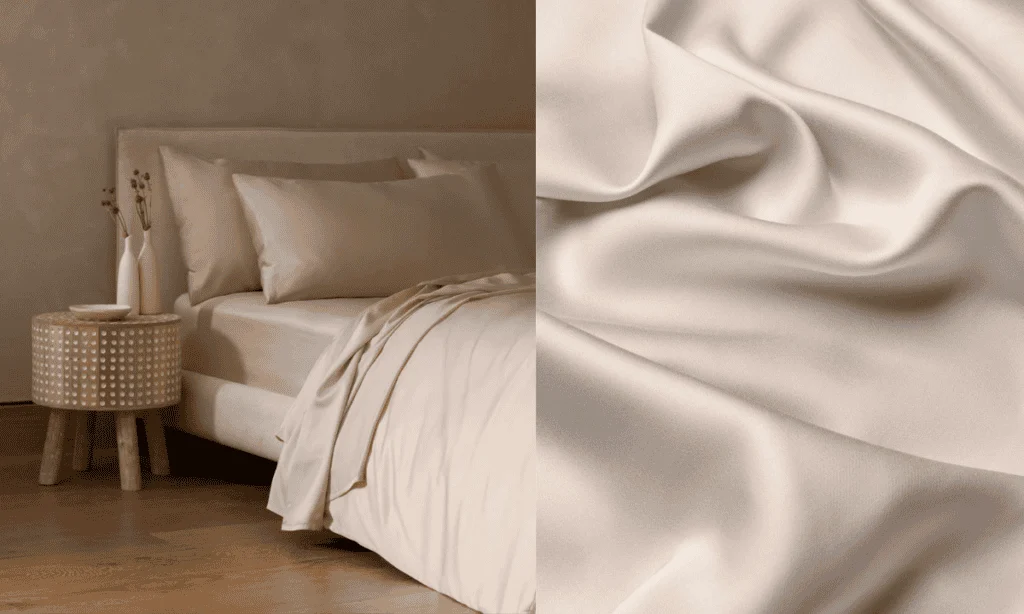
Silk:
The diva of the fabric world. Naturally hypoallergenic, smooth, and gentle on both skin and hair. Great if you’re trying to wake up looking like you spent the night in a shampoo commercial. Downside? They cost more, and you’ll cry a little when you realize they require delicate care.
- Brands to check: Mulberry Park Silks markets their sheets as hypoallergenic and skin-friendly, while LilySilk leans heavily into hypoallergenic beauty benefits.
The Silver-infused Showdown
Silver in sheets might sound like something cooked up in a lab for a sci-fi romcom, but the science is straight forward: silver ions naturally resist bacteria and odors. Please know that this does not mean you can wash your sheets less – instead, it means your sheets stay fresher between washes. But seriously, still wash your sheets.
Here’s how the silver players stack up:
Mizu:
If you want a lyocell fabric infused with silver, then Mizu is the brand to check out. They have both a core and hardcore sheet set, but I couldn’t tell the difference (besides price) at a glance.
A queen set of the core silver sheets start at $265, and the reviews speak for themselves: if you’re looking for a high quality lyocell set with silver infusion, this is a great option for you.
Miracle Brand:
100% cotton, available in two different weaves, the Signature (crisper cotton) and Lux, which does a great job of convincing you that you’re actually sleeping on a buttery-soft cooling cloud.
Easier on the wallet, the price of Miracle Brand’s Lux sheets is lower than the cost for Mizu’s core sheet set, and while some people love cotton for the simplicity on the skin, it does mean the sheets might come out of the dryer more wrinkly than other fabrics. If you’re a hardcore cotton girlie who wants something silky with the promise of silver’s anti-microbial protection, then this is the set for you.
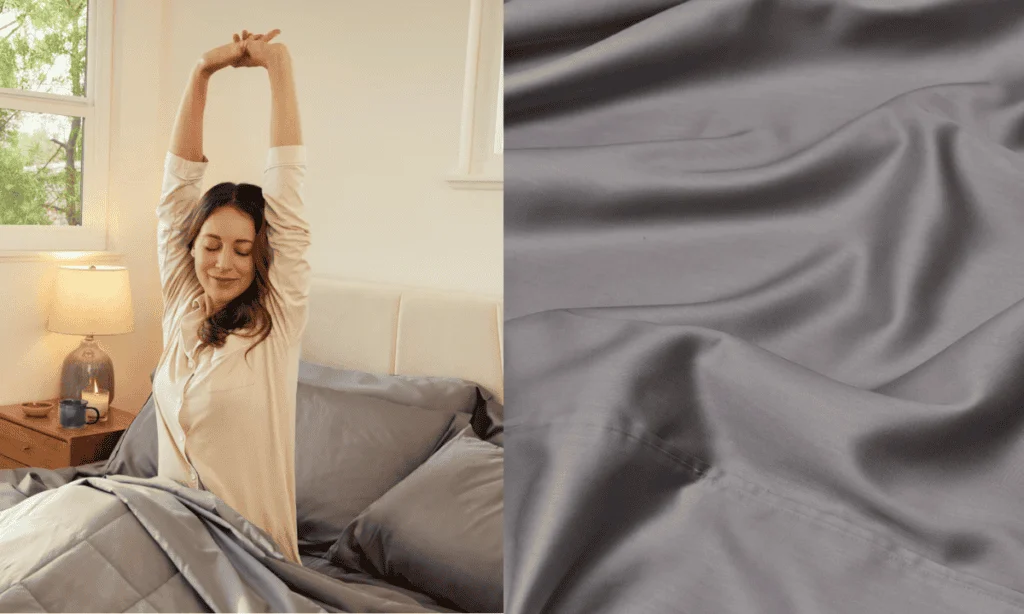
Neither of these will magically clean themselves (so please still wash your sheets), but they do keep allergens and odors in check. And with brands like Miracle Brand making lux options for a Cali King under $300, silver sheets feel like an accessible option.
Caring for Hypoallergenic Sheets
One thing I realized as I went down this ADHD sidequest of knowledge is that when and how you wash your sheets is just as important as picking the right fabric. Because even the most hypoallergenic sheets in the world won’t save you if you let them marinate in a stew of sweat, pet hair, and midnight snack crumbs. Here’s how to keep each fabric doing its job:
Cotton (classic):
- Wash in warm or hot water weekly – cotton can take the heat, and that helps kill dust mites.
- Tumble dry on low or medium heat to keep the fibers from breaking down.
- Avoid heavy fabric softeners; they coat cotton fibers and make them less breathable.
Silver-Infused Cotton:
- Treat it like cotton’s cooler cousin. Wash weekly in cold or warm water (hot won’t ruin the silver, but it will wear the cotton faster in these sheets).
- Skip the bleach – it messes with the silver’s anti-microbial properties.
- Air dry when you can, or tumble dry low. The less heat, the longer they’ll last.
Eucalyptus Lyocell (Tencel):
- Wash in cold water on a gentle cycle – lyocell doesn’t love high heat or rough handling.
- Line dry if possible, or tumble dry low. High heat can equal wrinkles and shrinkage.
- Don’t overload the washer – eucalyptus sheets get cranky if twisted up with heavy towels.
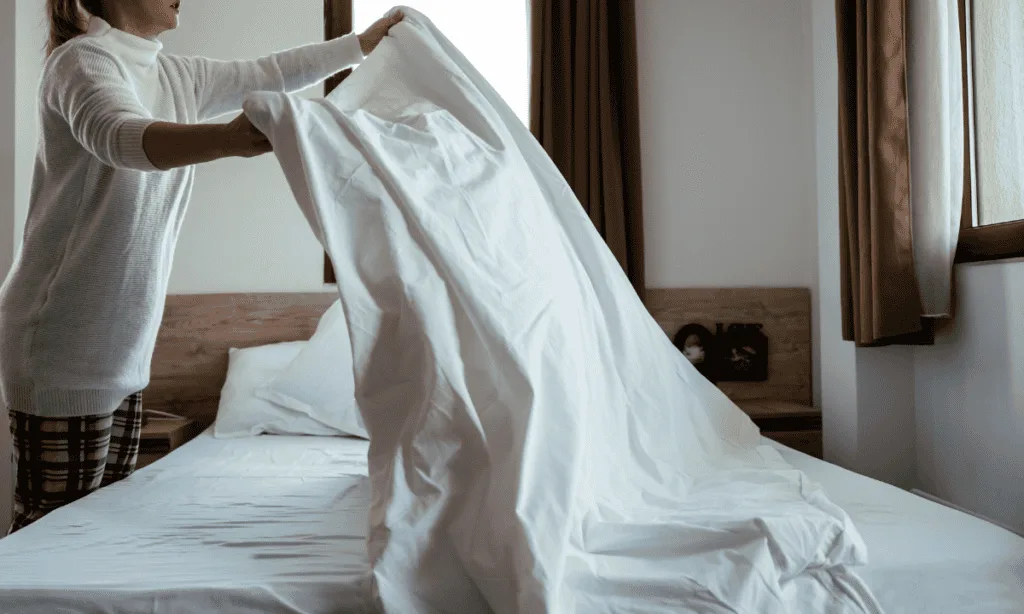
Bamboo Viscose
- Wash in cold water, gentle cycle – bamboo fibers are soft but delicate.
- Absolutely avoid fabric softeners and bleach.
- Tumble dry low or line dry. Bamboo can pill if overheated, so think “spa day,” not “scorched earth.”
Silk
- Hand wash in cold water with gentle silk detergent, or machine wash on a delicate cycle in a mesh bag.
- Never wring them out – blot with a towel and hang dry in the shade.
- Keep far away from direct sunlight, harsh detergents, and high heat (silk will punish you for your sins).
- Yes, they’re high maintenance. But hey, so is your skincare routine.
Final Thoughts
At the end of the day, hypoallergenic sheets aren’t just about chasing a label or trying to buy your way into better sleep with some shiny new bedding trend. They’re about making small, deliberate changes that reduce the things standing (or laying) in the way of a good night’s rest. If your sheets are trapping dust mites, bacteria, and pet dander, you’re always going to be fighting an uphill battle – no matter how many times you convince yourself it’s “just seasonal allergies.”
The fabrics we’ve talked through each bring something different to the table: cotton gives you that familiar, breathable base; eucalyptus and bamboo offer silky, moisture-wicking coolness; silk wraps you in luxury while being kind to your skin and hair; and silver-infused cotton blends the everyday comfort of cotton with the anti-microbial benefits of silver. What you choose depends not only on your allergy triggers but also on your lifestyle, your budget, and how much effort you’re willing to put into care.
For some people, a set of organic cotton sheets will do the trick by cutting down on chemical irritants and giving you a breathable, no-fuss option. For others, the cooling drape of eucalyptus or bamboo makes a bigger difference because it keeps night sweats from fueling allergens. And for those of us who want sheets that actively work against bacteria and odors, silver-infused options like Miracle Brand or Mizu can offer peace of mind without feeling like you’re living in a sterile bubble.
The bigger point here is that your bedding shouldn’t be sabotaging your health. When you spend a third of your life sleeping, those hours add up fast, and what you’re sleeping on matters more than people realize. Picking a hypoallergenic fabric and caring for it the right way can mean the difference between dragging yourself through the day in a fog of congestion and actually waking up feeling like your body and brain got the rest they deserve.
So no, hypoallergenic sheets aren’t a miracle cure for everything that ails you, but they are a tool you can use to make your nights cleaner, your mornings easier, and your whole sleep environment a little less hostile. If that means one less sneeze, one less 3 am wake-up, and one more reason to actually look forward to crawling into bed, I’d say that’s worth it.

